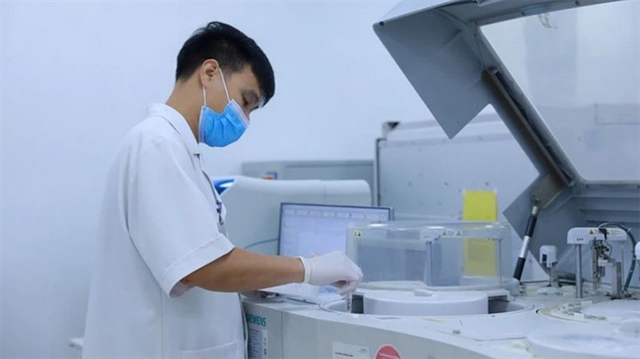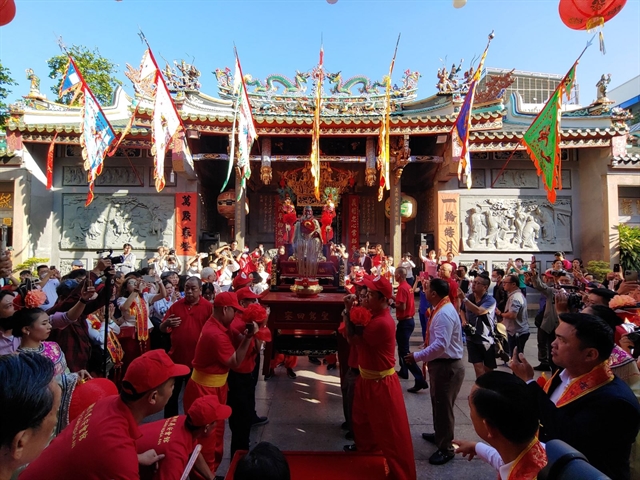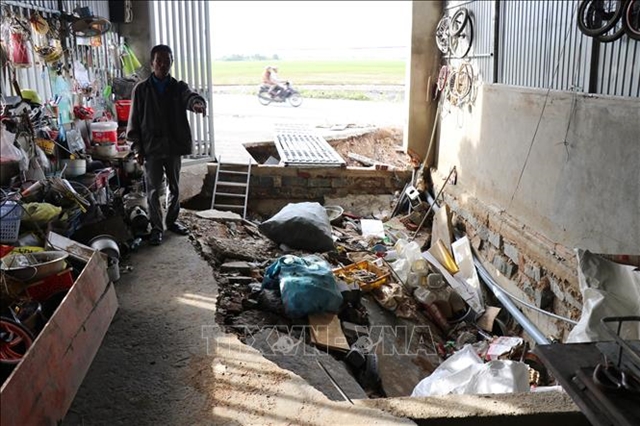.jpg) Life & Style
Life & Style


|
| First Full Moon Festival is held on January 15th of the lunar calendar. - VNA Photo |
HCM CITY – Vietnamese people celebrate the First Full Moon Festival as an occasion to start a new positive year.
The First Full Moon Festival is called by many other names such as Nguyên Dạ, Nguyên Tiêu, Nguyên Tịch or Tết Thượng Nguyên. It is held on January 15th of the lunar calendar.
People believe that the night lit by the first full moon in the new year will begin a new year with the pure scent of warm, fresh weather that is full of spring vitality.
Scholar Đào Duy Anh said the original meaning of “tiết” was the weather for four periods/seasons in a year. However, people have called “tiết” by “tết”, and tiết Nguyên Tiêu became Tết Nguyên Tiêu.
Ancestors organised the First Full Moon Festival on the 15th of the first lunar calendar month with offerings to deities, so they also named it Full Moon Worshiping Ceremony. It is also called Tết Thượng Nguyên because it is the first Tết after Lunar New Year and is a long-standing traditional festival.
According to Buddhist scriptures, the first day and first full moon day of the lunar calendar are Buddha’s days. Buddha descended to pagodas on the first full moon day to witness the sincerity of his Buddhists.
Pagodas on this day are decorated with colourful flowers, flags and lights, and flocks of people come to pray for all things good and peaceful.
On the First Full Moon Festival, the first bright moonlit night of a new spring cycle, the moonlight shines brightly after a long, dark and cold winter.
Feng Shui experts say, on that night, the harmony of yin and yang makes trees and fruits begin blooming.
During the festival, the kings used the first full moon day as an opportunity to convene people who had contributed to the country to meet in the capital and hold a banquet in the Royal Garden.
At the garden, they would together enjoy the flowers and poems, and the name of Tết Trạng Nguyên first started.
In the Lý–Trần dynasties, the king held Tết Trạng Nguyên. Especially under the reign of King Lê Thánh Tông, and the festival was solemnly celebrated in the capital city, Thăng Long, with jubilant dancing and singing of folk songs and flags and flowers throughout the palace and streets.
On this occasion, localities throughout the country held village festivals such as flower lantern festivals, boat racing, wrestling, dancing, and singing.
Buddhism and the First Full Moon Festival were introduced over a thousand years ago. It connected Vietnamese customs and a Chinese festival into a unique Vietnamese Tết which is associated with Buddhism.
The first full moon of the lunar calendar is one of the four largest Buddhist festivals in which Vietnamese people, especially Buddhists, visit pagodas to pray for family peace, prosperity, and peace in the country and people.
The centre of the festival is a ceremony of people praying for peace, health, prosperity and development for the people and the country. – VNS


.jpg)

